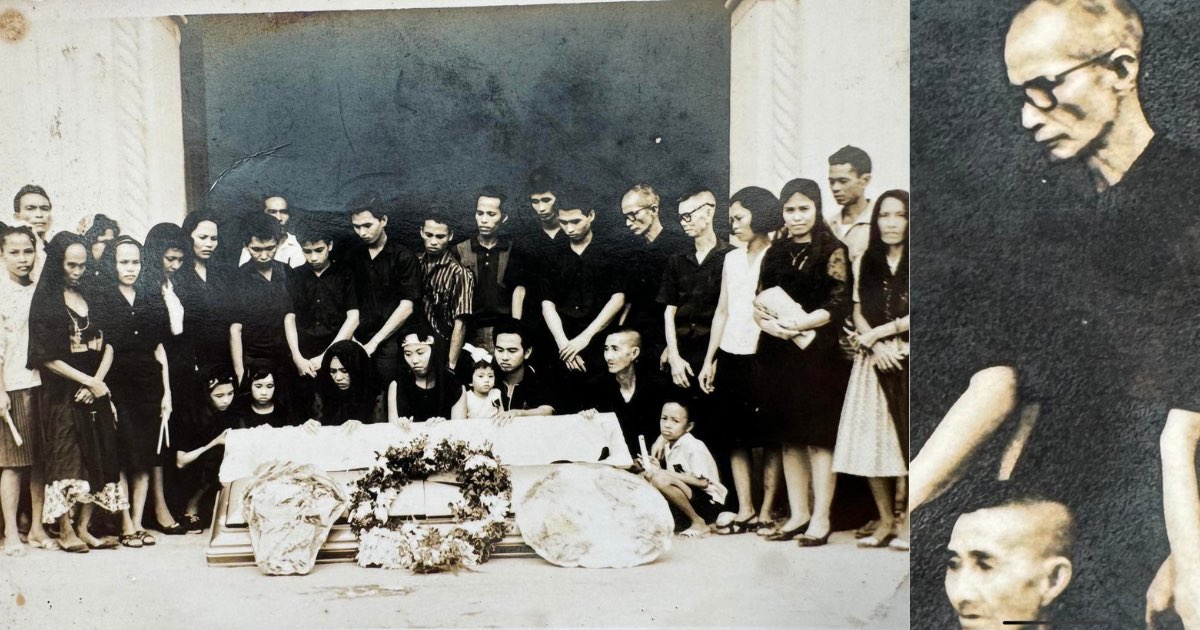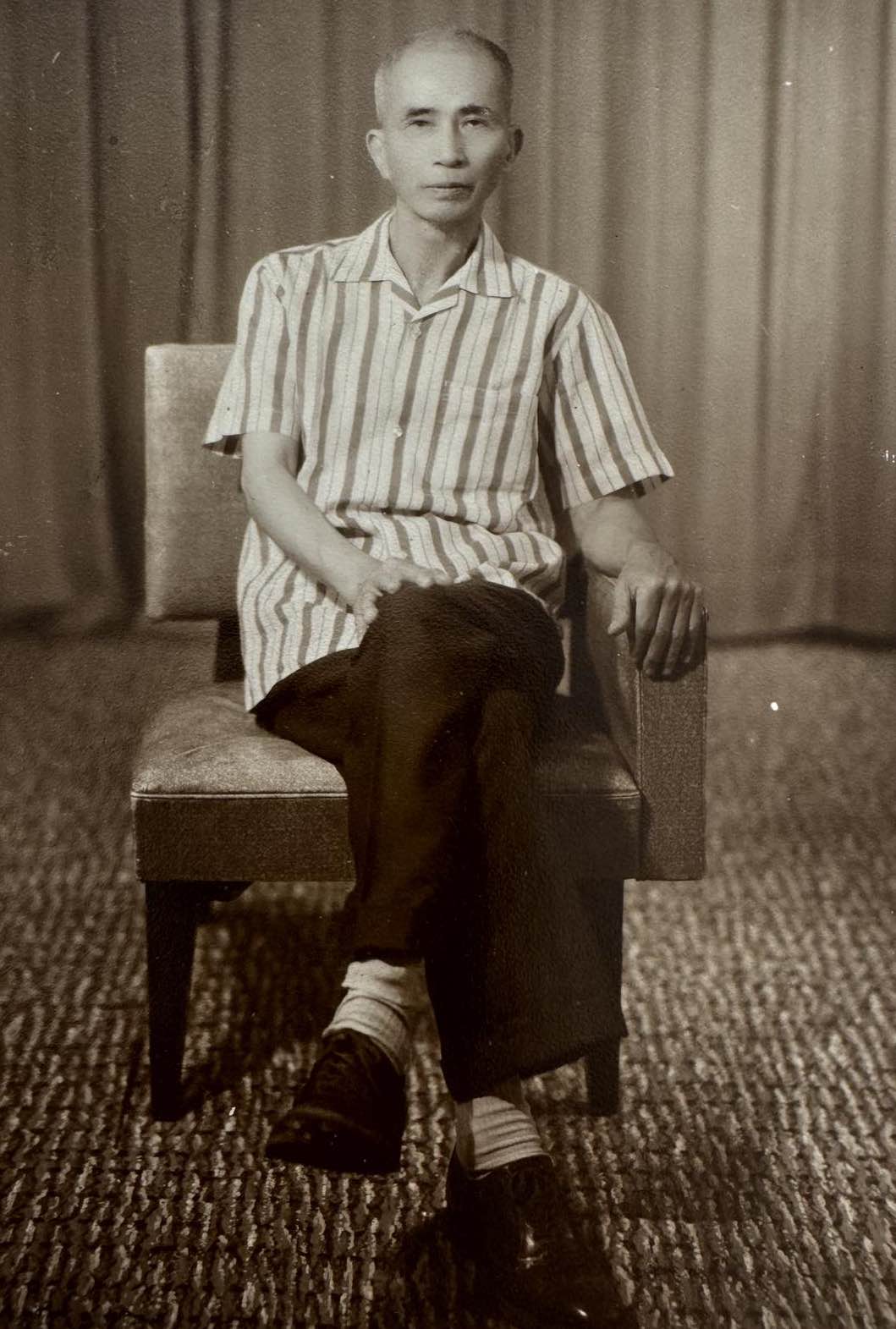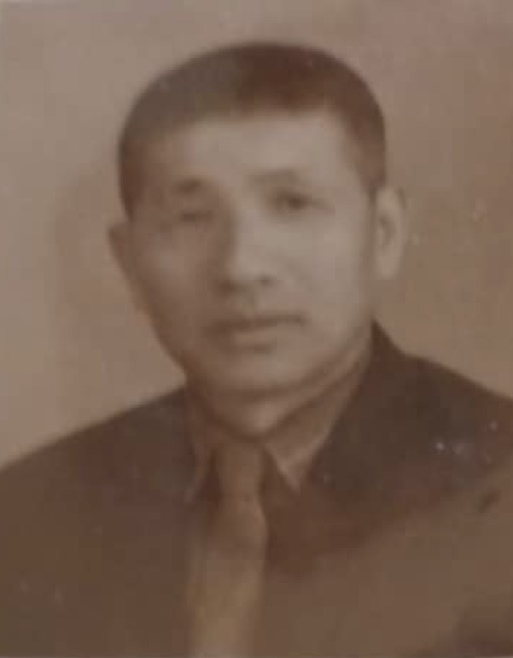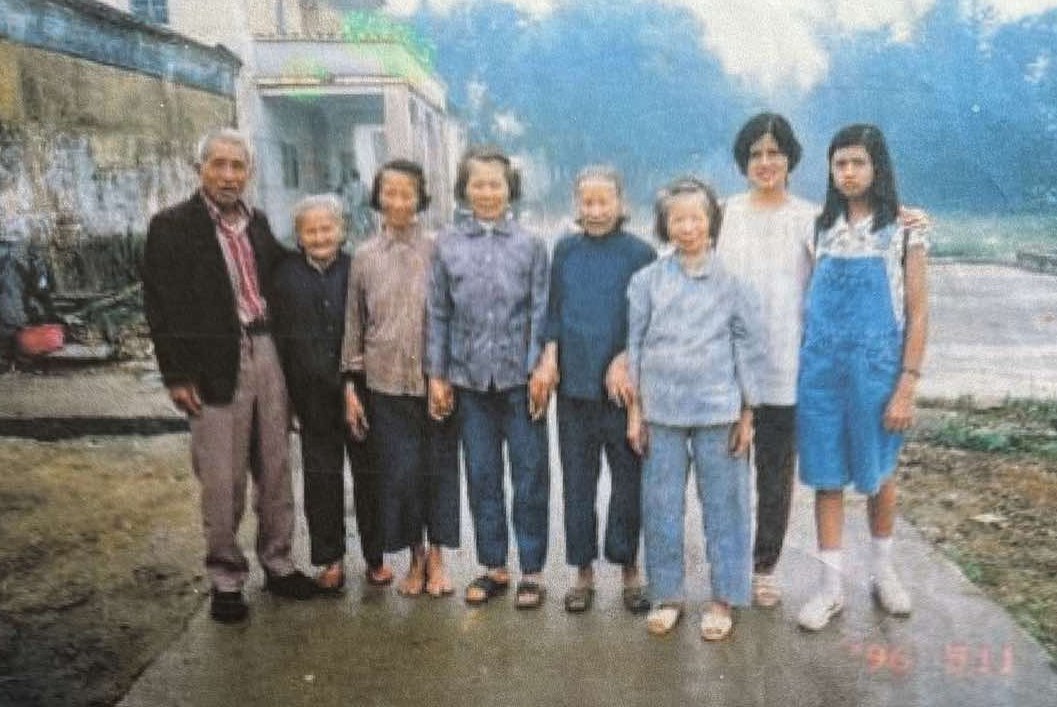My dad likes to tell the story of how my brother and I are the original street children.
It was in the late 60s when we were small kids, and there were no beggars yet in the streets of San Fernando, La Union. Dad said one of my Chinese grandfathers tagged us along as he begged for money from his wealthy friends to sustain his vice: opium.
Parang iyung mga nanlilimos lang ngayon sa EDSA na may karay-karay pang mga bata.
Ashok Ah Kong
Yes, one of my Chinese grandfathers was an opium addict. We called him Ashok (uncle in Cantonese for the father’s side of the family) Ah Kong. He was my paternal lolo’s brother-in-law and wasn’t really our blood relative.
I was too young to remember how he used opium. My Uncle Rico (my dad's brother) said Ashok Ah Kong usually injected it into his arm in the toilet.
In 1969, there was a big fire in the public market, and like everyone in the neighborhood, our family evacuated to the nearby seashore. In the confusion, Ashok Ah Kong was left behind and later found dead in his cot (the type American GIs used during the war) and covered with a dark mosquito net. I imagine that while the public market burned (our house was saved) and everyone was panicking, Ashok Ah Kong must have been “high” until he died.
I remember going to a small funeral parlor with my mommy and my brother to pay our respects on a Good Friday, my birthday. Ashok Ah Kong’s remains were buried in the Chinese cemetery, not far from the tombs of the rich Chinese in our town that he used to visit during Pista ti Natay (Undas or All Saints’ Day) so he could help himself to the food and fruit offerings left behind.
Opium, one of my Social Studies teachers in High School said, was used by the British colonizers to subjugate the Chinese and keep them submissive and subservient. Several online sources now, however, say the opium was mainly for trade. The British wanted to sell to the Chinese more opium (from India) in exchange for the tea, silk, and porcelain that they were buying from them. However, the Chinese wanted to prohibit opium because it was causing widespread addiction as well as economic and social problems. This trade disagreement led to the opium wars of 1839 and 1856, which China both lost.
Despite his opium addiction, Ashok Ah Kong was kind and generous, as my Lola Cion (dad’s mom) used to say. The story goes that in the province of Canton (now Guangdong), which was the center of the opium trade, Ashok Ah Kong belonged to a wealthy family. But his family couldn’t get him to stop his bad habit, so they exiled him by asking my lolo to bring him with them when they first sailed to the Philippines sometime in the 1930s.
In 2007, when I had a chance to visit our village in Guangdong, China, and trace our family’s roots, I tried looking for Ashok Ah Kong’s family, but sadly, no one remembers him.

My lolo (my dad's father) comes from a small village near the city of Kaiping (Hoiping in Cantonese), southwest of the Pearl River. Guangzhou is the bigger and more famous city, two hours away by car. Kaiping is where you find diaolous or tower houses that UNESCO had declared as heritage sites.
There’s a school where all the children have only one family name—ours. Soho, Szeto, Seto, Situ, etc. are written with the same Chinese characters but pronounced differently, depending on one’s province. In Hong Kong, for example, it is Szeto or Sze To. A village library and museum kept track of where many of the former villagers had migrated to—Canada, Australia, Southeast Asia, and the United States. According to one story, some of those who had gone to America helped build railways.
Incidentally, Singapore’s street food guru KF Seetoh (Anthony Bourdain’s go-to expert on Singaporean food, whose Wikipedia entry says that his Chinese family name is Situ) also traces his roots to Kaiping. He (KF Seetoh) told me so when he and Anthony were in Manila in 2017 to promote their food projects.
My grandfather’s village is typical in rural China—sleepy and agricultural. It has a welcome arch, a fishpond with a few ducks and geese running around, and plots planted with a vegetable that looked familiar—flowering Chinese pechay (Choy Sum in Cantonese), which Ashok Ah Wing, another one of my Chinese grandfathers, loved.

Ashok Ah Wing / Situ Shang Xiu
Ashok Ah Wing was the brother of my lolo. He was a chef or the chief cook in Gold City, the famous restaurant in our town, in the late 60s. Ashok Ah Wing was a Shaolin monk in China who also knew kung fu. It is said that his kung fu chops came in handy in the restaurants and kitchens he served in.
Ashok Ah Wing helped support our family when lolo died. He never married. He seemed a learned person—he borrowed Chinese newspapers from his friends to read regularly. He told me stories about Chiang Kai Shek, China’s last nationalist president, and Chairman Mao Tse Tung of the Communist Party.
I can count from 1 to 10 in Cantonese (yit ngey sam sey ehm lok tet pat kiew sip) because he taught me. Also, the words for fish, chicken, matchsticks, and yes, even the bad words. I can curse in Cantonese.

I also often watched him cook. He taught me how to flip pancakes without the sandok (ladle) and which foods are hot and cold to the body, a concept that is subscribed to in Chinese medicine. I can cook his pork pata with tausi and fragrant gabi or taro, his sweet soy pork liempo, his beef or pork watercress soup, and his simple stir-fry vegetables. I wish I also learned the secret of his white or steamed chicken (Hainan chicken or Singapore’s chicken rice) and his lomi (not noodles but pork ears). He would sing when he liked what he was cooking but muttered to himself when it wasn’t to his liking. Ashok Ah Wing was also a carpenter, and I have kept one of his wooden cabinets.
The Cantonese are renowned for their culinary skills. It is safe to say that the best Chinese cuisine is Cantonese. And that is because they train kids to be cooks and chefs early, simply by leaving them alone in the kitchen, according to Uncle William Szeto, my dad’s second cousin. The Cantonese in our town and other places were mistakenly called Macau, for the name of the port they exited China from—this probably also explains the term Lutong Macau.
My Lolo Pedro / So Ho Lee Yang / So Ho Mok / Situ Shang Xuan
My dad says it was his dad, my Lolo Pedro, who put up the very first Chinese restaurant in San Fernando—Far Eastern Restaurant—which eventually became the gathering place of the Cantonese, including those who had just arrived or gotten off the boat from China. My lolo helped them by offering free board and lodging before they could find places of their own.
Lolo’s restaurant was, however, destroyed during the war. When the war ended, he worked as a baker for the American liberators. I remember two big sturdy drums in our old house in the center of town. Those drums, my dad said, were containers for flour. Lolo claimed war reparation damage for his restaurant. The money was intended as capital for a bakery, but it soon ran out before the bakery could even start. In 1966, my lolo died due to a stroke, penniless and broke.

My Auntie Mely (dad’s sister) says lolo signed his name as So Ho Lee Yang in her school cards and sometimes as So Ho Mok, but they never really knew his real name. He was christened Pedro when he died, and the Catholic priest blessed his remains. Last year, we discovered his real name—Situ Shang Xuan, according to a niece from China who found me online.
I was only two years old when Lolo died, but strangely, I have a faint memory of him carrying me as a baby and how we all posed for a picture outside the church when he died. My uncles and aunts remember him fondly as gentle and kind who would try to shield them from my lola’s pamalo, scratch their backs, or fan them to sleep. He fought the local Chinese school when one of my uncles was locked in a toilet when he couldn’t keep up with his lessons.
Dad said lolo was a traveling merchant in China, selling various goods as he went from one village to the next. Like many Chinese immigrants of his generation, he left behind a family in China to escape poverty, hoping for better fortunes elsewhere. It is hard to believe now that China was even poorer than the Philippines in those days.
In the 1970s, one of the children my lolo left behind in China, Ah Kien (Szeto Kun), my dad’s half-brother, came looking for us here in the Philippines (from Hong Kong, where his family fled when China turned Communist). He gave me a tin can of Van Houten chocolates as pasalubong and one Hong Kong dollar in coins. I remember him crying at my lolo’s grave. He returned in the early 1980s and, for better communication with us, had learned some English. Ah Kien later migrated to the US and settled in Stockton Street in downtown San Francisco, California, where I visited him twice, the second and last time with my dad.
Three of my Chinese grandfathers had vices—opium for Ashok Ah Kong and gambling for Ashok Ah Wing and my lolo. My dad remembers riding the train with my lolo from San Fernando to Manila for some business and eventually ending up in one of the gambling dens in Misericordia Street (now Tomas Mapua Street). While lolo gambled, my dad would fall asleep on his lap until it was time to take the train back to La Union again.
Ah Wah Sok / Szeto Wah / Chan Pon
My fourth Chinese grandfather, Ah Wah Sok, the first cousin of my lolo, was the exception. Work was his only vice. While my lolo was at the gambling tables, Ah Wah Sok would be outside doing carpentry work. He eventually settled in Baguio from Manila, where he married an Ibaloi woman. He farmed and built a New Canton Restaurant along Soliman Street, then later along Magsaysay Road and near the Baguio Dangwa Terminal.

I remember waking up one freezing morning on Ah Wah Sok’s farm as a child, but I only recently discovered something amazing.
Last year, my crew and I traveled for 10 hours from Manila to Baguio and Benguet to follow up on an exclusive investigative story by no less than The Washington Post. About how, in the early 1900s, American colonizers brought indigenous people from the Philippines, including Igorots from the Cordilleras, to America as “human zoo exhibits.”
In the town of Mancayan, we found and interviewed some of their remaining relatives. Off-camera, I told them about my Cantonese grandfathers who once planted cabbage in the area. The man I interviewed, a local official, said it was the Cantonese who taught them how to grow cabbage and other upland vegetables. So, I guess we have my grandfathers and their fellow Cantonese in Benguet to thank for our chopsuey and salad vegetables.
Among my four Chinese grandfathers, only Ah Wah Sok had the chance to return to China. I wish they all did and would have loved to have been there, too.

I have told many stories, but I am most happy to tell this one because I want to honor the memory of my Chinese grandfathers, their pioneering spirit and sense of adventure, and look back at their wayward, dysfunctional ways.
My grandfathers left China with practically nothing but the shirts off their backs but somehow managed to build their own lives here. I wish one of them ended up a taipan. But while they may not have left us with material riches, we have a wealth of beautiful stories to tell about them.

